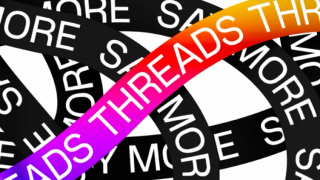The FTSE100 CEO Social Tracker by Kekst CNC aims to analyse how CEOs are currently using social media, with a focus on identifying what works and what learnings communication managers can leverage. In this second edition of the report, we explore how CEO communications has had to adapt during a time of geopolitical crisis.
On the 24th February 2022, Putin announced that Russia was enacting a ‘special military operation’ to ‘demilitarise and denazify’ Ukraine. The resulting invasion of Ukraine has resulted in one of the largest refugee crises in Europe since WWII and shocked the world.
As governments enacted sanctions and publicly condemned Putin’s actions, eyes turned to business leaders to respond to the unfolding crisis. It was a key time for FTSE100 executives to step up and be heard, but to also handle a major global issue sensitively and with compassion.
For leaders of FTSE100 businesses, the world really was watching and we can see their response in our newly published FTSE100 CEO Social Tracker. This reveals corporate responses and learnings communication managers can leverage.
The methodology
To compile this report, open-source intelligence was used by analyzing all LinkedIn and Twitter posts published by FTSE100 CEOs on their personal channels in the previous quarter.
Once this publicly available data is collated, all posts are categorized based on the type of media (video, link to article, link to website, infographic, etc.); topic (sustainability, company announcements, personal, etc.); and sentiment based on comments (positive, negative, neutral). This data enables our team to identify patterns pertaining to what LinkedIn and Twitter audiences are most receptive to from CEOs on the platform.
The results
The Kekst CNC insights team has revealed the data story of Ukraine, Russia, and corporate responses. It reveals a dramatic shift in executive communications. The data reveals that the Ukraine crisis acted as a social media reset for all CEOs. Executives kept quiet, with landmark company announcements being the only exceptions. The report reveals the following:
1. CEO posts dipped sharply in March
With the humanitarian crisis unfolding, ‘business-as-usual’ executive communications activity were set in sharp relief, and CEOs reduced their activity following the invasion. In a globalized world, Russian-linked business operations are a fact of life for global corporations, but for many of those companies’ business strategies changed. In some instances, a ‘pause’ later led to major announcements of divestment.
2. Fourteen FTSE100 CEOs took a leadership position
Of those CEOs who took a proactive and public leadership position during the crisis, 60% used first-person language in balancing their personal and business perspectives. Some 80% of the posts were emotive, using phrases like ‘shocked and saddened’ and ‘horrified’ to describe their reactions to the events. Unifying all posts was a clear directive on how the CEOs were responding to the crisis, varying from humanitarian support to ceasing operations in Russia.
3. Comments were mostly neutral
Negative responses to CEO posts almost always criticized the company, rather than the CEO directly. Often adverse reactions tended to occur in the case of companies with operations in Russia that hadn’t been publicly addressed. Mostly, feedback to CEO posts was neutral: comparing negative comments received by CEOs before and after the Ukraine crisis shows little change.
More coming soon
For further information, do visit the Kekst CNC website and read the full article. The full report that will be covered in upcoming posts contains information beyond geopolitical crisis also covering sustainability, DEI, HR and financial results – exploring best practice for executives on social media and what drives the most engagement.





